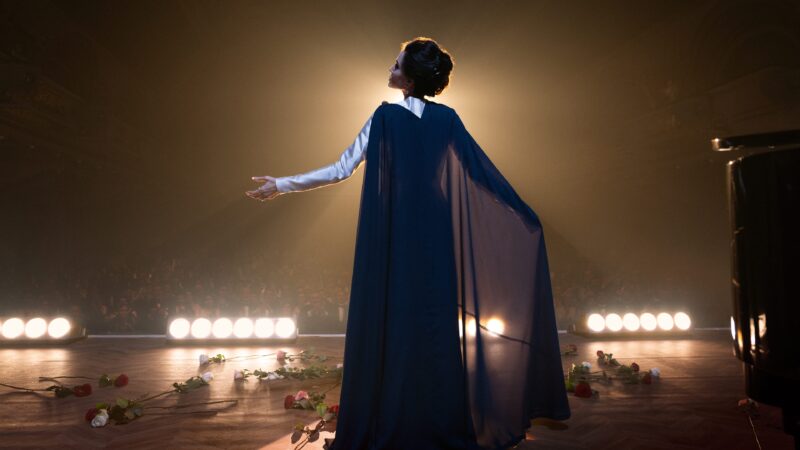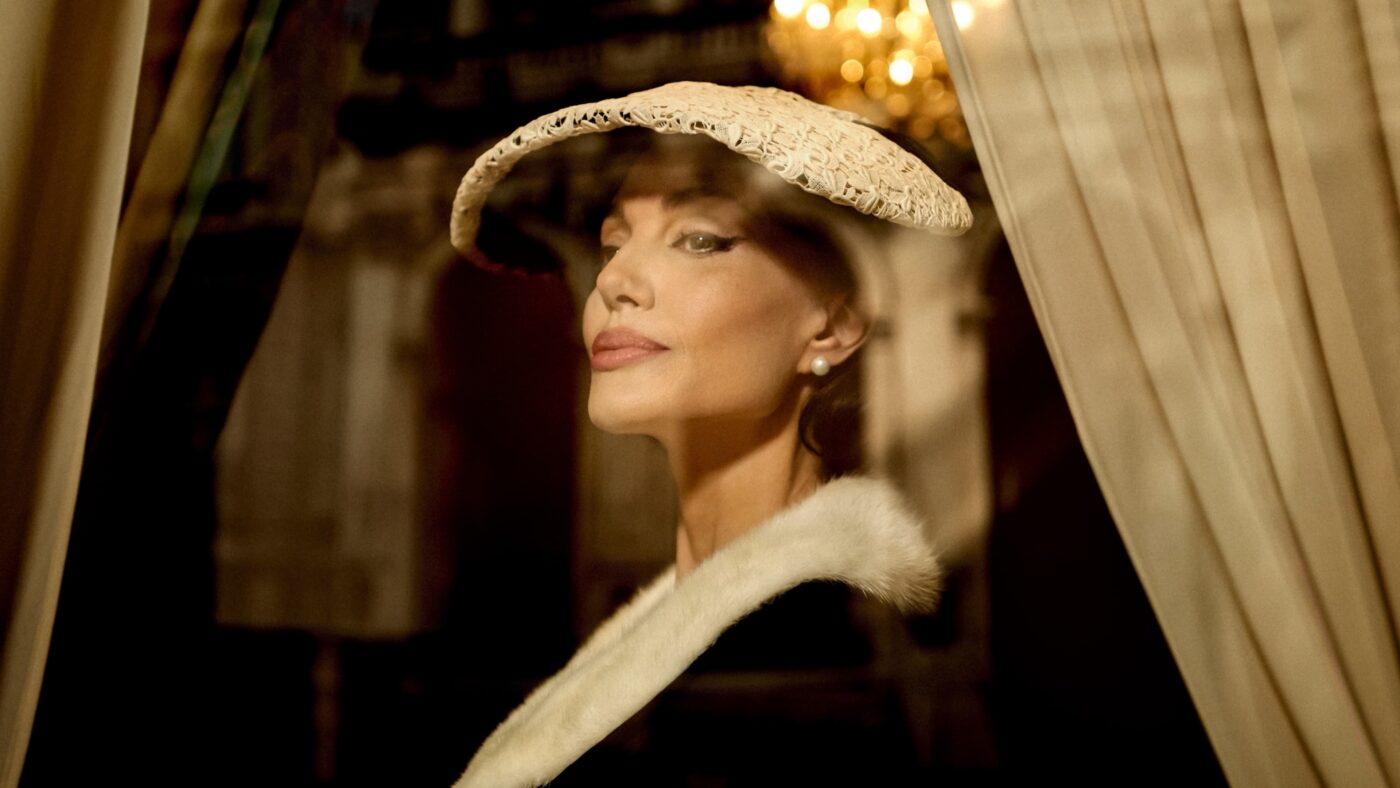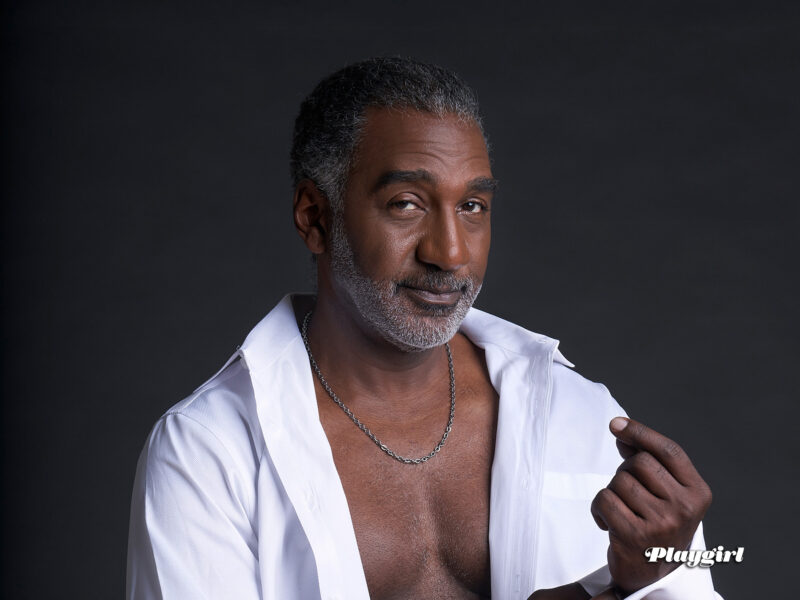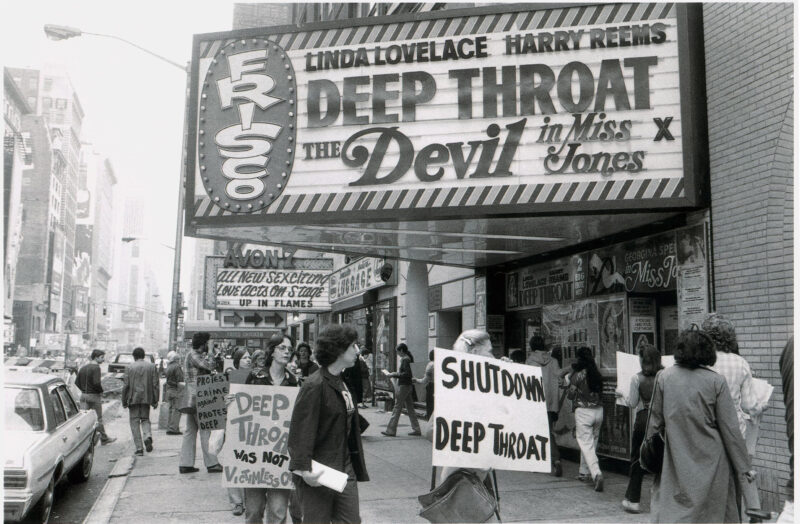In the documentary Maria by Callas (2017), Tom Volf explored Callas’ life journey through TV interviews, never-before-seen footage and the soprano’s letters (“her own words” read by mezzo Joyce DiDonato. More on that later). In Callas Forever (2002), Franco Zeffirelli filmed the diva’s final year and a fictional staging of Carmen. Playwright Terrence McNally set his play Master Class in the 70s, in the twilight of Callas’ career. So does Pablo Larraín in Maria (2024), which opens with Callas’ tragic death on September 16th 1977 and flashes back to one week earlier. With countless documentaries and YouTube tributes and on-camera interviews (in Italian, French, English, Greek), they’re all testaments to the singer’s enduring legacy (decades after her death); all attempt to find the woman (Maria) underneath the legend (Callas).
Larraín’s Maria begins with a pan and a slow dolly shot to reveal a living room: a stretcher on the left and a white sheet behind an armchair –you would hardly realize that sheet covers someone’s body. Cut to black. And those black frames speak of the impossibility of lifting the shroud, of knowing –let alone of dramatizing– anyone’s truth. What follows is a close-up of Maria singing (Angelina Jolie) and a montage of her triumphs on stage and of her life (private/public) –some in Super8, some in Super16, some in 35mm, some in black and white, all replicas of historical footage.
From the start Larraín confronts the traps and the many dilemmas of any biopic, and he does so in a meta-cinematographic fashion: what’s the relationship between the original and its imitation/representation? Where’s the thin line between fictional and authentic? Traps that even Volf’s documentary couldn’t escape, not when DiDonato ‘impersonated’ (faked?) Callas’ voice over.
From the very start, opera is front and center: Jolie/Callas sings “Ave Maria” over the opening montage. But opera –and the stage– isn’t just Maria’s “life”: it’s the architecture of Larraín’s film and its language. “Ave Maria” (from Verdi’s Otello) is used as a leitmotif throughout the movie –sang or re-arranged or played at the piano or fully orchestrated. Callas sings seven popular arias: the aforementioned “Ave Maria,” “Casta diva,” “O mio babbino caro,” “Habanera,” “Qui la voce sua soave,” “Piangete voi,” “Vissi d’arte” and listens to two legendary recordings of hers: “Ebben ne andrò lontana” (La Wally) and “Sempre libera” (La Traviata). In between one aria and the other, the orchestral excerpts, the preludes and the intermezzos (from La Traviata, Medea, Parsifal, Tosca). And the choruses (from Il Trovatore and Madama Butterfly).
Some are obvious (almost didactic) clues: “Ave Maria” at the beginning for the namesake and the à propos lyrics (“In the hour of death. Amen”); “Vissi d’arte” at the end, because the character of Tosca tragically overlaps with –and sums up– Callas’ (“I lived for art, I lived for love… In my hour of sorrow, why, why, Lord? Ah, why do you repay me so?”) Others are subtler, but no less pregnant: La Traviata’s prelude when Callas first meets Onassis; the piano version of “Addio del passato,” when she fences with president Kennedy and realizes it’s all over with the magnate. All have a dramatic purpose. All inform the mise en scène –either historically (from I Puritani at La Fenice, 1949 to Anna Bolena at La Scala, 1957), or emotionally (Callas’ hallucinations: the “Anvil chorus” at the Place du Trocadéro and the “Humming chorus” under the rain). All guide us, more so than the five explanatory clapboards used by Larraín to introduce each chapter: “Maria,” “La Diva,” “Important Truth,” “Curtain Call,” “An Ending: Ascent.”

‘Maria’ • courtesy Pablo Larraín, Netflix.
Chapter “Maria” reveals Callas’ apartment –as grandiose as an opera house– with wide shots and slow, steady pans and dollies. It’s an introduction to the movie’s premise, Maria’s struggle to find the voice she lost and, with it, her identity: Jolie attempting to sing “Casta diva” in the kitchen, while her housemaid makes an omelette, is intercut with Jolie/Callas gloriously singing Norma onstage. All the while, this chapter signals how we’re about to ‘imagine’ the diva’s final week. “You can tell him about the visions you’re having,” says the housemaid. And the butler: “This television crew… is it real?” “What is real and what is not real is my business,” Maria answers. The stage is set.
“La Diva:” the ‘television crew’ comes in and, all of a sudden, those wide shots become unstable, the camera is hand-held and the interviewer (between a pirandellian character and a figment of Maria’s imagination) is named after a hypnotic sedative, Mandrax. We’re no longer in Maria’s apartment, we’re in her mind –hence the “Anvil chorus” fantasy at the Trocadéro. And we’re in the filmmaker’s mind too, exploring the medium, weaving his own “visions,” juggling “sanity and insanity,” playing with “what is real and what is not” (sound work is no exception: of note two bold MOS scenes, when Callas takes her pills and is suddenly cut off from the real world).
“Important Truth:” Mandrax tells Maria the title of the (imaginary) film he’s shooting, La Callas: The Last Days. The film WE watch is Mandrax’s –and it’s Maria’s, forever hostage to her voice and reckoning with her past: “My life playing before my eyes,” she explains. “My mother made me sing. Onassis forbade me to sing. And now I’ll sing for myself.” For the second time, Jolie/Callas rehearsing an aria is intercut with the flashback of Callas on stage (at La Fenice). The opera is I Puritani and the juxtaposition –much like Norma in chapter 1– mercilessly photographs the loss of her voice. The contrast is even starker in “Curtain Call:” the mad scene from Anna Bolena with the piano accompanist and a feeble, irredeemable voice vs. the triumphant Anna Bolena at La Scala some 20 years earlier. And it’s solved, but only as a fantasy, in the final chapter (“An Ending: Ascent”).
Executive Music Producer John Warhurst has worked miracles, separating Callas’ vocals, cleaning, remixing and remastering: no doubt Callas sounds like as she was recorded in 2024. But for all the flashbacks at the opera houses and the lush “visions” and the moments of introspection, do we ever grasp what Callas’ voice was? What it could do? How it moved us? Jonathan Demme dug deeper in Philadelphia, when Tom Hanks plays Callas’ recording of “La mamma morta:” “Can you hear the heartache in her voice? Can you feel it, Joe? Here come the strings and it changes everything. The music is filled with hope. And that will change again, listen… ‘I bring sorrow to those who love me.’ Ah…that single cello.” And perhaps there’s more of Maria’s charisma in Larraín’s montage for the closing credits: all real footage à la Tom Volf, which counterpoints the opening, all replicas.
Maria opened in select theaters on November 27 and is now streaming on Netflix.






